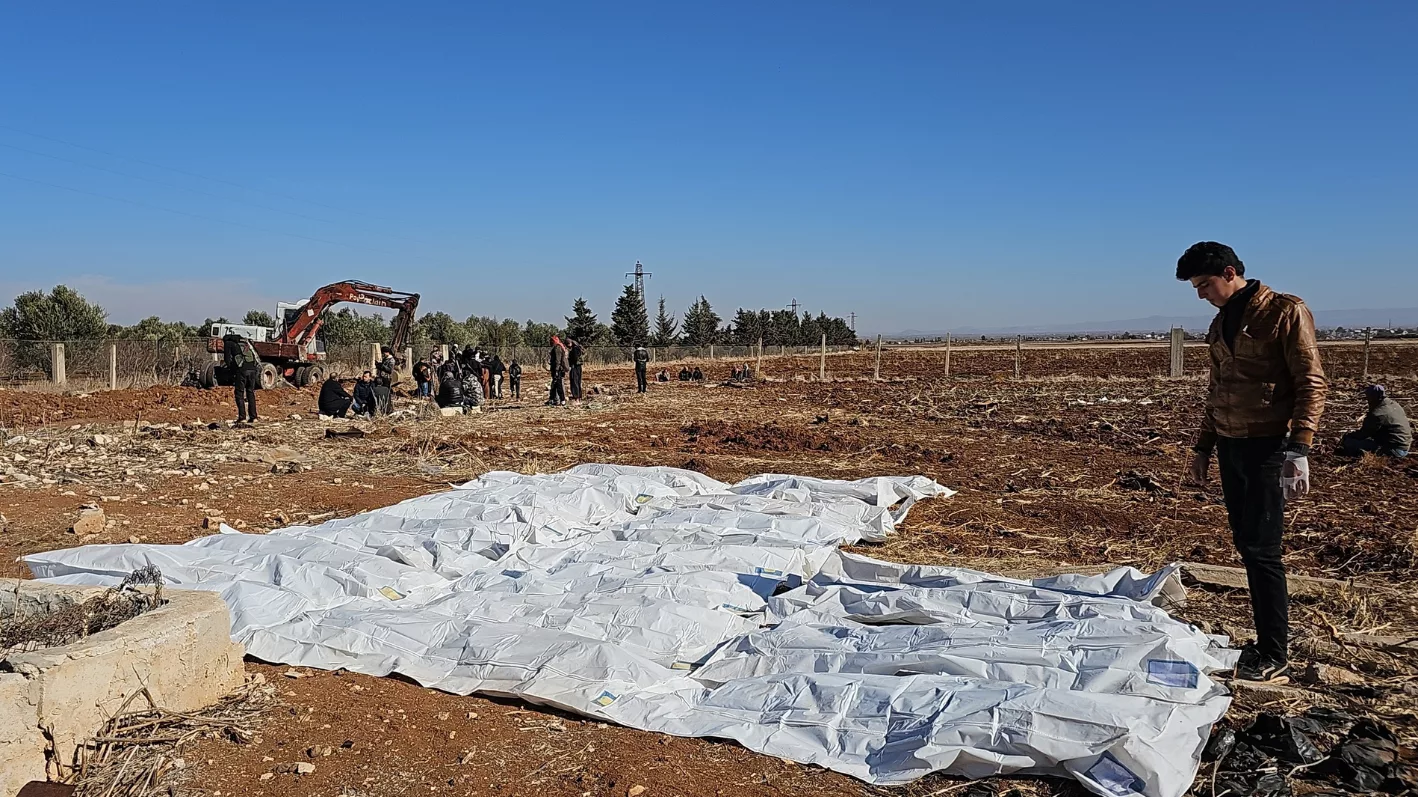
(LONDON) — Mouaz Moustafa, the head of the U.S.-based Syrian advocacy organization, the Syrian Emergency Task Force, told ABC News Tuesday there are believed to be well over 100,000 bodies in a “massive” grave discovered at a site 25 miles north of Damascus.
Opposition groups and rescue workers are still uncovering evidence of the alleged human rights abuses committed by toppled President Bashar Assad’s regime over his 24 years in power — and over 50 years of Assad family rule.
The overthrown president was in power from 2000 to his ousting on Dec. 8. His sudden fall in the face of a surprise, multi-pronged rebel offensive marked the end of a 14-year conflict between Damascus and a collection of anti-government forces.
Now, Syria’s rebel-led transitional government, NGOs and rescue workers are uncovering Assad’s vast network of prisons and suspected mass burial sites, where more than 100,000 people may have gone missing since 2011.
SETF believes it has identified three other “mass graves” so far, as well as two “smaller ones,” Moustafa said.
Moustafa told ABC News from the Syrian capital that the site in al-Qutayfah close to Damascus consists of “massive graves” where “lines or trenches were 6 to 7 meters deep, 3 to 4 meters wide and 50 to 150 meters long.”
“In my conversation with the gravediggers, they told me that four tractor trailer trucks each carrying over 150 bodies came twice a week from 2012 until 2018,” Moustafa said.
“The bulldozer excavator driver described how intelligence officers forced workers to use the bulldozer to flatten and compress the bodies to make them fit and easier to bury before digging the next line or trench,” he added.
The graves contained men, women, children and the elderly “tortured to death” by Assad’s regime, Moustafa said.
The Qutayfah burial site is in an area that was under military control, with the road in closed to civilian traffic.
Large villas nearby housed Iranian and Iraqi allies of the Assad regime, which became increasingly reliant on foreign partners in Moscow, Tehran and Baghdad to retain control as the brutal civil war wore on.
Syria’s Air Force Intelligence — considered the most powerful branch of Assad’s military — also maintained a presence nearby.
At the site, workers clad in white overalls piled large black plastic bags of human bones onto a truck. Some of the bags had Farsi — the official language of Iran — written on them.
Locals told ABC News they saw bags being dumped at the site in the days leading up to Assad’s fall, as rebels surged towards the capital from Idlib and Aleppo in the north and Daraa in the south.
In his first statement since fleeing Syria, Assad on Monday blamed a “terrorist onslaught” for the stunning collapse of his regime.
Assad made no comment on the longstanding human rights abuse allegations, abuses that the opposition and key Western governments say intensified after the outbreak of civil war in 2011.
The fall of his regime saw jubilant fighters and residents emptying Assad’s infamous prisons. More than 100,000 people are still believed to be missing, disappeared into Damascus’ fearsome security apparatus.
The leader of the Hayat Tahrir al-Sham rebel group, which led the surprise offensive striking out of Idlib southwards towards Damascus, vowed that the transitional government would hold to account those implicated in Assad’s human rights abuses.
Ahmed al-Sharaa — also known by his nom de guerre Abu Mohammed al-Jolani — said shortly after the fall of Damascus, “We will not hesitate to hold accountable the criminals, murderers, security and army officers involved in torturing the Syrian people.”
Copyright © 2024, ABC Audio. All rights reserved.








